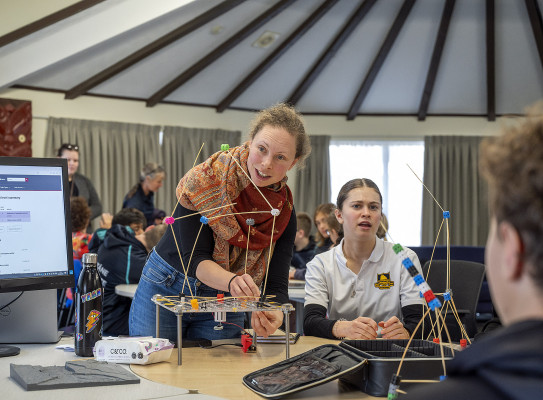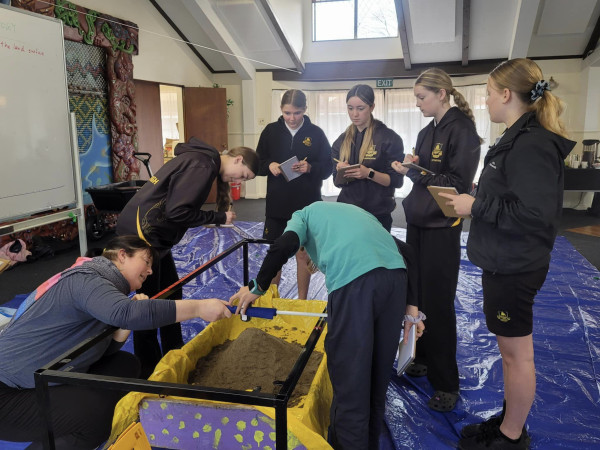Rangatahi explore coastal hazards and climate change science at Whakatāne workshops

Whakatāne students got to grips with earthquake resilient design, melting ice sheets, and climate modelling, as part of a series of coastal resilience workshops run by scientists from GNS Science, Te Herenga Waka – Victoria University of Wellington, and the University of Canterbury, supported by the Te Ao Hurihuri: Te Ao Hou – Our Changing Coast research programme.
Communities along our coastlines will face increased challenges from climate change in the future. An important part of tackling that challenge is awareness and preparedness – and hands-on science education is an excellent way to inspire the next generation of scientists to get engaged and become part of the solution.
Recent workshops, held at Te Whare Wānanga o Awanuiārangi, gave rangatahi from Whakatāne High School – Te Kura Tuarua ō Te Mānuka Tūtahi – and Whakatāne Intermediate an opportunity to learn more about the science behind hazards such as coastal inundation from sea-level rise, earthquakes and tsunamis, and how to prepare for them.
Rangatahi took part in interactive activities led by scientists from the Our Changing Coast research programme, including trying their hand at building structures to withstand the “shaking table” earthquake simulator, using sand and a balloon to explore geomorphology and landscape evolution with GNS Science interim chief science advisor Richard Levy, and learning some computer-based climate modelling skills.
An important focus of the workshops was increasing community preparedness for natural disasters. Whakatāne is in the Eastern Bay of Plenty, close to the Hikurangi subduction zone. The local community discussed a worst-case scenario for their area – a potential 9.1 megathrust earthquake and subsequent tsunami. Our Changing Coast Research Fellow and Whakatāne local Mawera Karetai led the workshop participants in the first steps of developing an emergency plan to take home and complete with whānau.

Richard Levy and Tim Naish (Co-leader Our Changing Coast, Te Herenga Waka – Victoria University of Wellington) held a public lecture for the wider community about their research in Antarctica, and how what happens in Antarctica doesn’t stay in Antarctica – the impacts of melting ice sheets will eventually be felt in Aotearoa, through rising sea-levels and coastal flooding.
The Our Changing Coast research programme aims to improve understanding of the impacts of sea-level rise on coastal communities, including coastal flooding, groundwater salination, and risks to key infrastructure and cultural sites. The research will produce an online tool providing sea-level projections at a local scale along Aotearoa New Zealand’s coastline, including the probability of major earthquakes changing land elevation.
GNS Science environmental data scientist Mario Krapp says the Whakatāne workshops were a great success, and the team intends to develop them further into an education programme that can be rolled out to other coastal communities around the motu.

It was inspiring to see how willing these rangatahi were to develop their understanding of coastal hazards, and their passion to develop new ideas and plans to help their community prepare for natural disasters and climate impacts.